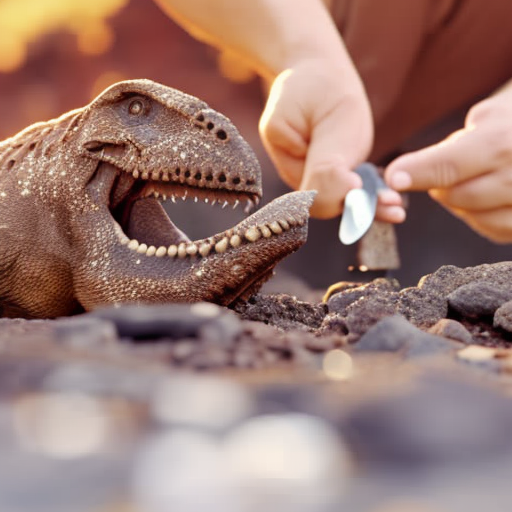Dinosaur Discoveries: Unveiling the Ancient World
Dinosaur discoveries have captivated the world for centuries, shedding light on the Earth’s ancient past and revolutionizing our understanding of prehistoric life. These magnificent creatures roamed the planet millions of years ago, and through the efforts of paleontologists and researchers, we continue to uncover new and fascinating information about them.
The Age of Dinosaurs
Dinosaurs first appeared during the Mesozoic Era, which spanned from approximately 252 to 66 million years ago. This era is divided into three periods: the Triassic, Jurassic, and Cretaceous. Each period saw the rise and fall of different dinosaur species, with the Cretaceous period being the last before their extinction.
Early Discoveries
The first recognized dinosaur fossil was discovered in 1824 by William Buckland, an English geologist. This fossil, named Megalosaurus, marked the beginning of a new era in paleontology. In the following years, more dinosaur fossils were found, including the iconic Iguanodon and Hylaeosaurus.
Noteworthy Discoveries
Throughout history, numerous significant dinosaur discoveries have shaped our understanding of these ancient creatures. Some notable examples include:
- Tyrannosaurus rex: Discovered in 1902 by Barnum Brown, this fearsome predator is one of the most famous dinosaurs. Its large size, sharp teeth, and powerful jaws have made it a popular subject of study and fascination.
- Brachiosaurus: Unearthed in 1900 by Elmer Riggs, this massive herbivore was known for its long neck and towering height. It is one of the largest dinosaurs ever discovered.
- Velociraptor: Made famous by the movie Jurassic Park, Velociraptor was a small, agile predator. Its discovery in the 1920s provided valuable insights into the behavior and hunting strategies of dinosaurs.
- Triceratops: This iconic dinosaur with its three-horned face and frilled neck was first discovered in the late 19th century. Triceratops fossils have provided valuable information about dinosaur anatomy and social behavior.
Feathered Dinosaurs
One of the most groundbreaking discoveries in recent years is the evidence of feathers on some dinosaur species. Previously, it was believed that all dinosaurs were scaly reptiles. However, the discovery of feathered fossils in China in the 1990s challenged this notion. Fossils like Sinosauropteryx and Anchiornis provided compelling evidence that some dinosaurs had feathers, suggesting a closer evolutionary link between dinosaurs and modern birds.
Mass Extinction and the K-T Boundary
The extinction of dinosaurs, along with many other species, occurred approximately 66 million years ago. This event, known as the Cretaceous-Paleogene (K-Pg) extinction event, is believed to have been caused by a combination of factors, including a large asteroid impact and volcanic activity. The K-T boundary, a geological layer found in rocks from this time period, contains high levels of iridium, which is rare on Earth but common in asteroids. This discovery provided crucial evidence supporting the asteroid impact theory.
Modern Techniques and Technologies
Advancements in technology have greatly enhanced our ability to study and understand dinosaurs. High-resolution imaging techniques, such as CT scans and laser scanning, allow researchers to examine fossils in unprecedented detail without damaging them. Additionally, genetic studies and molecular analysis have provided insights into dinosaur relationships and evolution.
Conclusion
Dinosaur discoveries continue to captivate our imagination and expand our knowledge of the ancient world. From the first recognized fossil to the recent revelations about feathered dinosaurs, each discovery brings us closer to unraveling the mysteries of these incredible creatures. With ongoing research and technological advancements, we can expect even more exciting revelations in the future, further enriching our understanding of dinosaurs and their place in Earth’s history.












